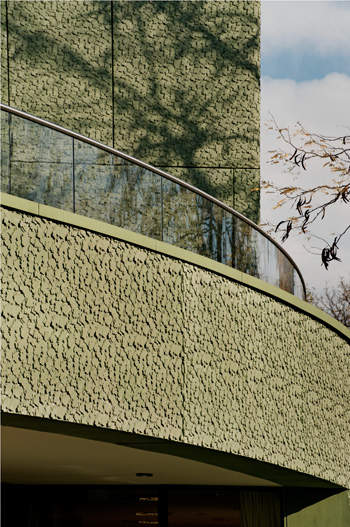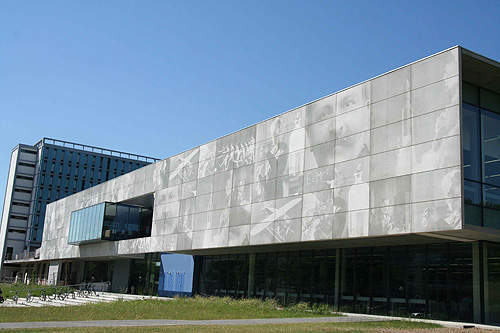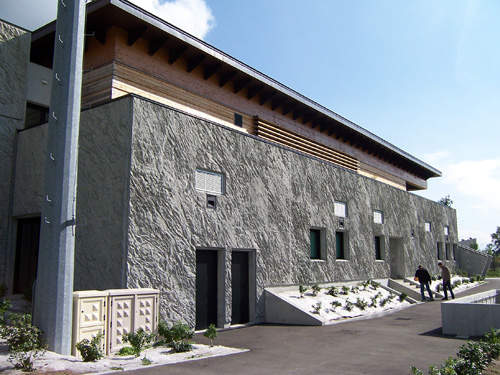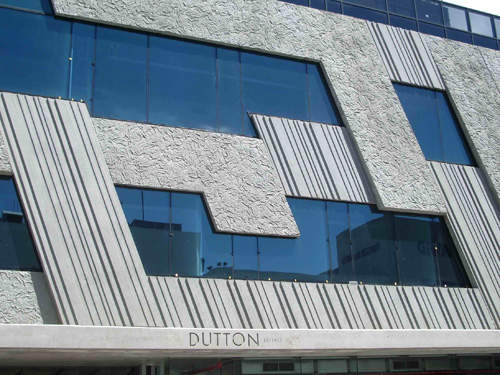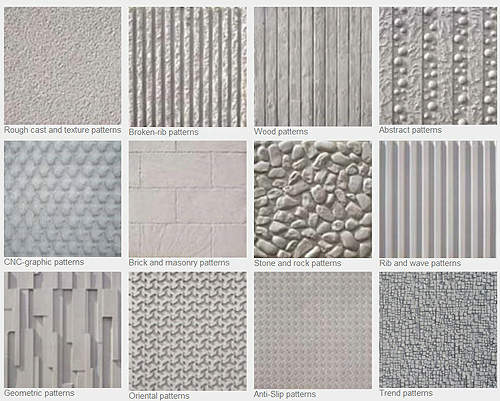The use of elastic formliners for patterning and texturing fair-faced concrete surfaces is widely accepted as beneficial for quality and value, and is supported by the many millions of squared metres which endorse it.
The elasticity of RECKLI formliners enables damage-free demoulding of concrete even with complicated and delicate details. For more than 40 years the RECKLI system has given architects, planners and builders the greatest possible freedom to meet virtually any design requirement. RECKLI formliners can be used in precast or cast insitu concrete.
Formliner designs for all concretes
The RECKLI pattern book contains 250 standard designs that are available to planners, architects, designers and producers of all concretes. There is a selection of timber and plaster / stucco designs, ribbed patterns, broken and smooth, abstract and anti-slip patterns as well as masonry, brick, stone and rock designs. In many instances the rock designs have been taken from actual rock formations.
Details of the formliners are shown with the pattern and include the maximum mould size, depth of pattern, overall approximate thickness of the formliner and any other information required for a particular pattern. RECKLI supplies formliners in various degrees of reusability and provided auxiliary materials such as release agents, adhesives and repair spatulas are specially tailored to the material of the formliners RECKLI can guarantee 10, 50 and 100+ reuses. Due to manufacturing reasons RECKLI cannot provide all designs in all three series.
Custom-made formliner designs from detailed drawings
RECKLI is proud to be able to make custom-made designs from detailed drawings. From these drawings RECKLI manufactures a 1:1 master pattern. The formliner made from this master pattern becomes a ‘negative’ of the master which is used to return to the ‘master form’ in concrete. The only question the customer needs to consider is whether it can be handled and transported.
Photo-engraving casting technique
The photo-engraving technique is a computer-controlled way of transferring pictures to concrete using a milling technique. To do this, an image master is first scanned and converted to 256 shades of grey. In order to transfer the picture to the material, a processing file is generated from the determined grey-scale values, which contains the milling commands for a special CNC miller. A milled model then serves as a template master for the manufacture of the formliners. The formliners elasticity, quality and ability to reproduce detail allow an economic production of a photo-like image to come to the concrete surface.
Like any pattern, the photo-engraving relies on the play of light and shadow. For this reason side light makes the photo in the concrete appear clearer than frontal light or total shade. On a facade, the moving sunlight leads to varying effects on the image, whilst interiors can have an effect which is accentuated further by the skillful use of artificial light.
Numerous auxiliary products are also available to the user when using a RECKLI formliner. In addition to adhesives and release agents there are cleaning materials, repair kits and pourable and pasty elastomers for the manufacture of pattern stop-offs, inserts and recesses.
Patterned and textured concrete surfaces
Economics is not the only reason why building with concrete has become more popular and the key to success is increasing public awareness and acceptance. This can be done by working to combine the conciseness and aesthetics of a building with an individual and economic building method and integrating the aesthetics into the existing residential and traffic environment. Formliners can make an architecturally decisive contribution to this and countless buildings worldwide supply the mark of confidence by having RECKLI formliner produced patterned and textured concrete surfaces.


